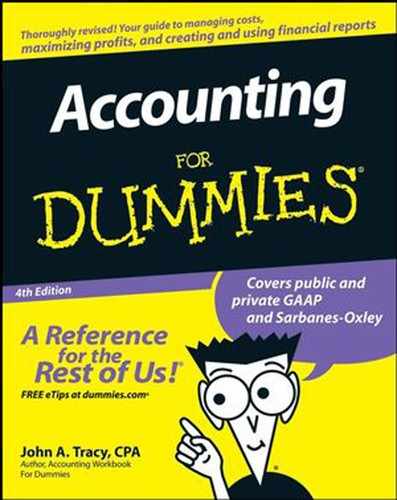Chapter 12. Getting a Financial Report Ready for Release
In This Chapter
Keeping up-to-date on accounting and financial reporting standards
Assuring that disclosure is adequate
Nudging the numbers to make things look better
Comparing private and public businesses
Dealing with financial reports' information overload
Looking at changes in owners' equity
In Chapters 4, 5, and 6, I explain the three primary financial statements of a business:
Income statement: Summarizes sales revenue and other income (if any) and expenses and losses (if any) for the period. It ends with the bottom-line profit for the period, which most commonly is called net income or net earnings. (Inside a business this profit performance statement is commonly called the Profit & Loss, or P&L, report.)
Balance sheet: Summarizes financial condition at the end of the period, consisting of amounts for assets, liabilities, and owners' equity at that instant in time. (Its more formal name is the statement of financial condition.)
Statement of cash flows: Reports the cash increase or decrease during the period from profit-making activities (revenue and expenses) and the reasons this key figure is different than bottom-line net income. It also summarizes other cash flows during the period from investing and financing activities.
These three statements, plus the footnotes to the financials and other content, are packaged into annual financial reports so a business's investors, lenders, and other interested parties can keep tabs on the business's financial health. In this chapter, I shine a light on the preparation process so you can recognize the types of decisions that must be made before a financial report hits the streets.
